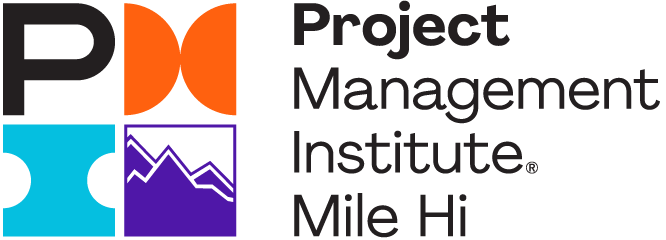26 January 2021 at 06:00PM
Build a Better Product with Lean Startup, Design Thinking and Agile
A quick Google search on “failed products” will fill up your browser screen. These are products by well-known companies that were successfully launched but ultimately failed in the market.
Companies are fast learning how to increase their chances of success by tweaking their traditional ways of product development and the product development lifecycle itself. They are moving away from a “making people want our products” approach—to making things that people want.
Lean Startup, Design Thinking, and Agile approaches are relatively simple to understand but difficult to implement. Innovation needs discipline, an open mind, an ability to listen, and a keen focus on driving value.
Lean Startup
Leveraging Lean Startup practices, business owners are discovering which products will give them the best chance for success. Employing Design Thinking, they are making that connection with their consumer base from the onset and getting feedback early. Using an iterative Agile approach, organizations are able to validate incrementally and go to market faster with quality products.
MAKE ONLY THINGS THAT PEOPLE WANT
The Lean Startup way is a systematic process for quickly vetting program and product ideas, thus raising the odds of success. Experimenting with low-fidelity prototypes in an actual customer environment provides deep insights into the real use of a product and the problems it is meant to solve.
COLLABORATE TO SEEK YOUR ANSWERS
Serial entrepreneur-turned-academic Steve Blank emphasizes learning about customers and their problems as early in the development process as possible. The Customer development model appears as follows:
Find a Problem/Solution Fit
- Customer Discovery - Understanding customer problems and needs
- Customer Validation - Developing a replicable sales model
Find a Product/Market Fit
- Customer Creation - Understanding end-user demand, and how to create and drive it
- Customer Building - Focusing on growth instead of learning
UNLEASH THE ENTREPRENEURS ON YOUR TEAM
Organizations are learning to get early insight into their customer needs and market reactions through rapid cycles of the following:
- Leap-of-Faith Assumptions - Identify the beliefs that must be true for startup success
- Minimum Viable Product (MVP) - Experiment to test assumptions quickly and inexpensively
- Validated Learning - Learn what is working and not working.
- Build - Measure – Learn Feedback Loop
- Pivot or Preserve - Decide to change strategy or continue
Design Thinking
To visualize potential trade-offs among customer, markets, and products, Alexander Osterwalder developed the Business Model Canvas. This strategic management template and variations of the concept enable early collaboration. The goal is to illustrate opportunities and challenges by using existing knowledge or research. With a business model thus inscribed, a startup can enjoy a firm foundation from which to launch its products.
DESIGN STARTS WITH CONVERSATION
The traditional process for launching a new product is to write a business plan, pitch it to investors, getting funded, assemble a team, introduce the product, and start selling as hard as you can. Proof of whether you have a successful product comes after launch. Most consider that too late a time horizon to find out about market reality.
Design thinking is an approach of really understanding and matching people's needs with what is technologically feasible and has business viability. Adopting creative strategies, innovative teams solve complex product problems that sometimes start with an idea that has many unknowns.
FIVE PHASES OF DESIGN
The five phases of Design Thinking, according to Hasso-Plattner Institute of Design at Stanford (d.school), are as follows:
- Empathize – with your users
- Define – your users’ needs, their problem, and your insights
- Ideate – by challenging assumptions and creating ideas for innovative solutions
- Prototype – to start creating solutions
- Test – your solutions with your users
Agile
Organizations competing in the market place are taking an iterative and incremental approach to building their products. In an Agile methodology, requirements and solutions evolve through collaboration among self-organizing cross-functional teams.
RESPOND TO CHANGE: AGILE MINDSET
Agile is a mindset, based on the Agile Manifesto, which values individuals and interactions within a team as well as across multiple teams. All self-organizing teams collaborate to develop working software and hone an ability to respond to change.
BE RELENTLESS IN DELIVERING VALUE FOR YOUR CUSTOMER
With Agile, the shortness of an iteration allows teams to focus on the most valuable of deliverables. Every iteration involves the complete cycle of design/development/testing and building a potentially shippable increment. On demonstration, the tangible incremental delivery allows rapid feedback from the customer. An iteration means priorities can be shifted from iteration to iteration, and new features/changes can be added into the next iteration. Responding to customer, course correcting, and doing only what adds value helps to build the right product and the product right.
Conclusion
Some of the world’s leading brands, such as Apple, Google, Samsung and GE, have rapidly adopted innovative approaches to problem solving and product development. Approaches such as Design Thinking, Lean Startup and Agile have revealed to the business world innovative practices that allow an early insight into customer and market reactions to a new idea. Get ready and open to experiment with these new concepts, blend them with traditional practices, and give your programs/projects/products a chance to truly make a world impact.
Helpful Links
- http://theleanstartup.com/
- https://www.interaction-design.org/literature/topics/design-thinking
- https://www.scrum.org/
References
- Brown, Tim. 2020. “Design Thinking.” HBR’s 10 Must Reads on Design Thinking. Book 41 in HBR’s 10 Must Reads series. Cambridge: Harvard Business Review.
- Pichler, Roman. 2010. Agile Product Management with Scrum: Creating Products that Customers Love. Boston: Addison-Wesley Professional.
- Ries, Eric. 2011. The Lean Startup: How Today's Entrepreneurs Use Continuous Innovation to Create Radically Successful Businesses. New York: Crown Business.
Additional Resources
Som Ghosh is a favorite speaker at PMI Mile Hi Chapter's Saturday Workshops at Regis University. For the next available workshop, check our events calendar. We welcome members and non-members alike. Membership information is always available, too.
About the Author

Somnath Ghosh is an Enterprise Transformation Consultant with over 25+ years of strategic consulting experience in software development, Agile/DevOps enablement, and change management. As a thought leader, he guides organizations to achieve dramatic improvement and efficiency—from their product ideation to delivery. He has been a frequent speaker and contributor to PMI local and global conferences and offers workshops on advanced topics that help organizations manage large programs in digital transformation and innovation.
Find Som on LinkedIn at SomGhosh or http://www.linkedin.com/in/somghosh.



